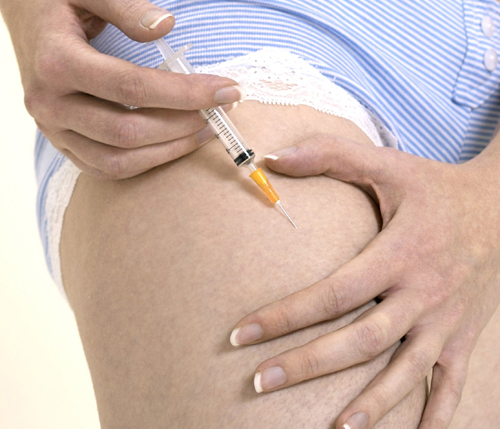You are 34 Weeks Exactly 42 days to go…
If you’ve made the decision to have a home birth, you’ll need to ensure you’re fully prepared in good time.
Your baby today
A close-up of the baby’s face clearly showing the lip shape and
slightly separated eyelids. The slight shadowing seen to the left of the
image is from the wall of the uterus, which at this stage of the
pregnancy will always be very close to your baby.
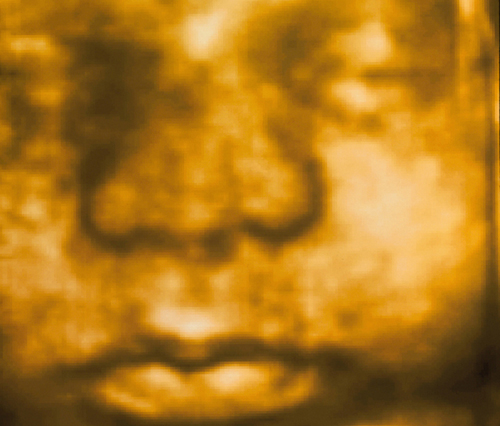
Women had their babies at home for generations;
it was only in the 20th century that women began to have hospital
births. If you’re considering a home birth, remember that the majority
of pregnancies and deliveries are normal and do not need any medical
intervention.
Be reassured that if
you have decided to have a home birth and then change your mind, for
example if you decide you want an epidural, or your midwife advises you
that the baby needs help, you will be transferred to a hospital.
Your relationship with your midwife is even more important if you’re giving birth at home as she will be your sole medical support.
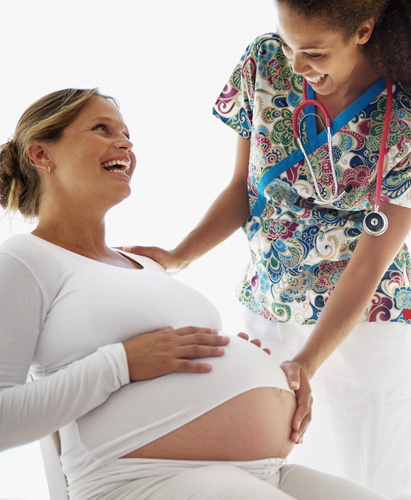
… Doctor
| Q: |
What additional things do I need to think about if I’m having a home birth?
|
| A: |
Have all the items you need for labor and birth gathered in
the place you intend to deliver, and organize your items separately from
the baby’s items.
As well as practical
items, such as clothing, toiletries, and sanitary pads, you may also
want to have on hand music, phone numbers, and a camera. It’s a good
idea to have a well-stocked fridge so make a list of nutritious foods to
stock up on before your due date. This will help you during labor and
in the first week of parenthood. Your baby will need diapers, cotton
cloths, onesies, clothing, sheets, and blankets.
If you have other children, you may need to make arrangements for them to be taken care of.
Even though you’re
planning to have your baby at home, there are circumstances in which you
may need to be transferred to a hospital. This can happen before,
during, or after labor and so, even though you may not want to
contemplate this outcome, have an emergency bag packed just in case.
|
Group B strep test
Ten to 30 percent
of pregnant women carry the strep B bacteria in the vagina or rectal
area. Known as GBS (group B streptococcus), it is usually harmless in
adults, but can cause a rare and serious infection in newborn babies if
untreated.
Many women are now routinely screened for GBS,
at 35–37 weeks of pregnancy. If the result is positive, antibiotic
treatment can be given during labor that will reduce the risk of the
baby becoming infected. Some hospitals don’t screen but if the bacteria
is detected in a urine test or a swab is taken for another reason and is
positive, antibiotic treatment may given in labor.
The test is very straightforward and involves taking a swab of the area around your vagina and rectum with results usually within 24–48 hours.
If GBS is detected, and treatment given as soon as labor starts, there is little risk to the baby.
It is possible to be infected with GBS in a second pregnancy, even if you didn’t have it first time around.
Your 35th Week
Getting exercise is
probably the last thing you want to do, but it’s worth the effort. The
more you move, the more energy you will gain. Gentle exercise will also
help relieve some of the aches and twinges of late pregnancy. The baby’s
movements may change as he has less room to move around. Instead of
kicks, he may be shuffling around. He’s busy, though, practicing for the
outside world, teaching himself to suckle and focus his vision.
NOTE
Try to stay active, even though you may be waddling by now
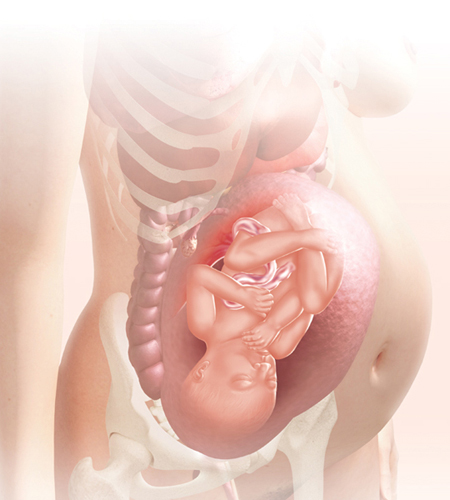
You are 34 Weeks and 1 Day 41 days to go…
As your size begins to have an impact on your daily activities, you’ll find that a few practical adjustments are necessary.
Your baby today
This profile of the baby shows the tip of the nose touching the
placenta. Your placenta will not be growing any more and now thins
slightly. Within, the placenta continues to mature and it remains a
highly efficient means of supplying your baby’s energy needs.
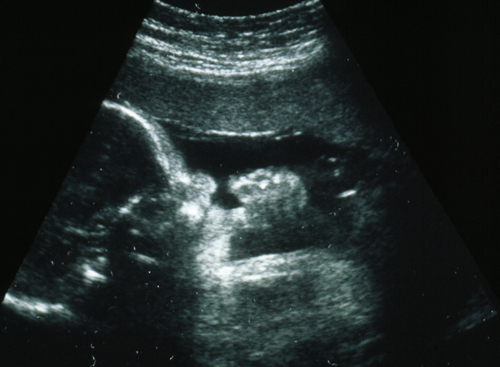
Your posture will change
as your belly continues to grow. To compensate for the heavy weight
you’re carrying, you might find that you lean back slightly, especially
when you’re walking downhill. You might also waddle when you walk as you
shift your weight from side to side. In a few weeks’ time, when the
baby begins to engage into the pelvis (see When your baby drops), you may find that you waddle even more.
It’s normal at this
late stage of pregnancy to move more slowly than normal. You may find
yourself struggling to get out of bed or out of a chair, and picking
something up off the floor can be more difficult than usual. Tasks such
as tying your shoelaces or painting your toenails can seem impossible.
You can overcome tasks such as these; for example by putting your feet
on a stool to tie your shoelaces so you don’t have to bend down so far.
If you need help, there’s no shame in asking. It can be difficult to be
reliant on others but remember it’s only temporary.
… Doctor
| Q: |
Can I have a water birth in the hospital?
|
| A: |
This depends on the maternity unit: some have birthing pools;
others have facilities for you to rent a pool. More hospitals and
birthing centers are offering this birthing option, so ask about renting
a pool and bringing it in, but realize that just might not be an
option. Some hospitals only allow you to labor in a pool, but not to
deliver.
If your maternity unit does have a birthing pool, bear in mind that it may already be in use when you go into labor.
|
… Your health
A diabetic pregnancy
Whether you develop diabetes in pregnancy (known as gestational diabetes),
or have preexisting diabetes, you’ll require special care from your
doctor. She will work out a plan for you, since diabetes poses risk in
pregnancy.
In the mother, risks include high blood pressure, blood clots, preeclampsia,
diabetic kidney disease, and diabetic retinopathy, a condition that
affects the retina in the eye. For the baby, there is an increased risk
of congenital abnormalities and growth may be too fast or too slow.
The key to a
healthy pregnancy and baby when you have diabetes is good blood-sugar
control since your insulin requirements will change throughout
pregnancy. Controlling blood-sugar levels reduces the risk of birth
defects and stillbirth, or of you having a larger than expected baby,
which can lead to problems during the birth.
If you have gestational
diabetes, you will need to adapt your diet to include carbohydrates and
fiber and reduce your intake of fats and sugar. You may also need
insulin injections (see image) to help control your blood-sugar levels.
